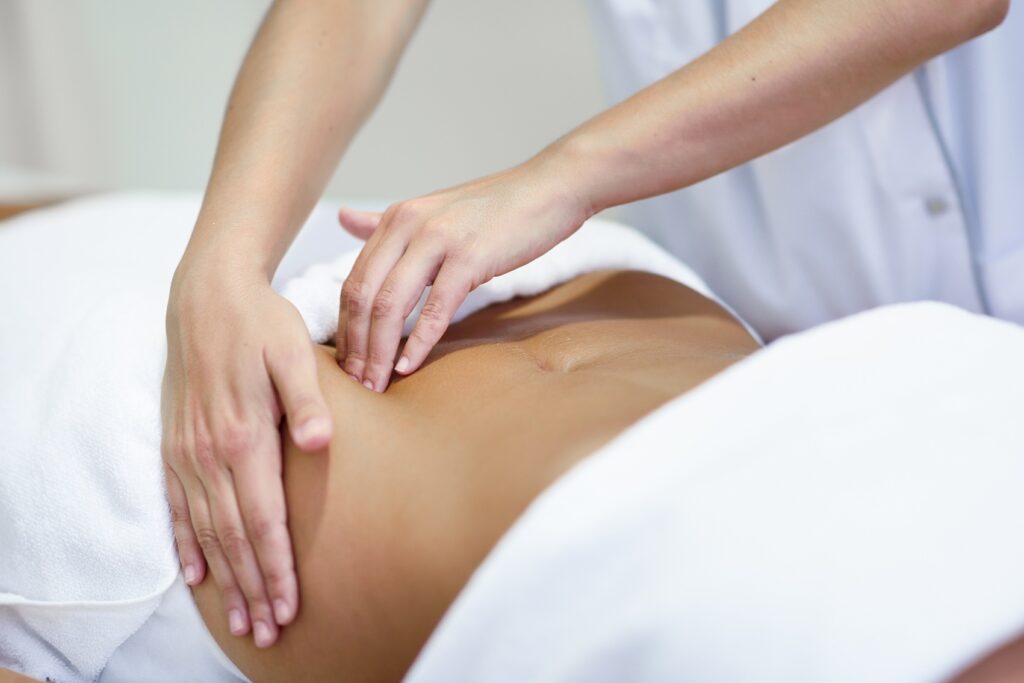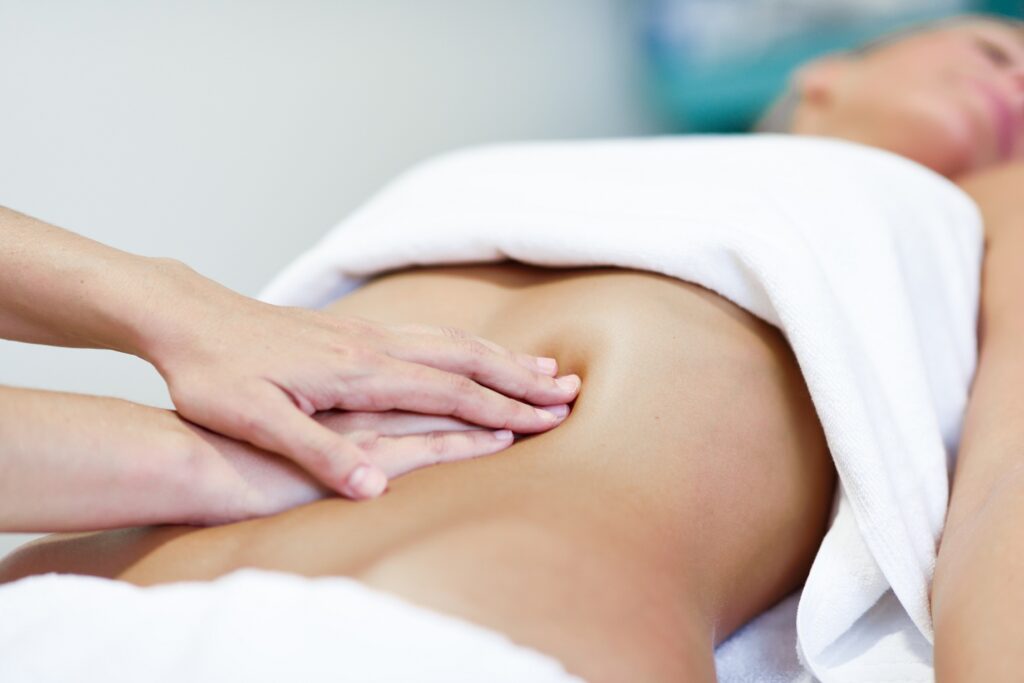The current lifestyle with a sedentary tendency, and the so called “home-office” , in which many hours are spent sitting or an inadequate diet, causes our body to accumulate toxins and retain fluids and this blocks the body from purifying itself.
Lymphatic drainage is a form of massage therapy technique that favors the circulation of the lymph through slow, smooth, repetitive, and precise movements following the direction of the lymphatic vessels and that stimulates it with different mainly purifying purposes (cleaning of the whole organism), since it constitutes one of the best forms of detoxification of the immune system.
This type of therapy should be performed by a professional trained and experienced in these techniques.
What is the lymphatic system?
The lymphatic system is a complex and effective system of self-purification and cleaning composed of small vessels that run very close to the blood vessels in parallel, transporting a liquid called lymph.
The lymph is a thick, yellowish fluid composed of water and other materials such as proteins that have passed from the blood (nutrients, fat, toxins) and from the intercellular space (waste products of cells) to the lymphatic system and transports them to the lymph nodes. lymphatics (distributed throughout the body, neck, groin, armpits …, filter and eliminate toxic germs and cell waste) to finally return to circulation again and be eliminated through the kidney. Under normal conditions, 90% of the fluid is reabsorbed by the same blood vessels and the rest, 10%, is eliminated through the lymphatic vessels. When the system becomes congested by excess toxins, the lymph nodes cannot clear the lymph, and edema, swelling, or fluid retention occurs.

Drainage Indications:
- Edema of lower extremities (Sd, from tired legs) Primary and secondary lymphedema.
- Bedridden people.
- Gestation.
- Premenstrual syndrome.
- Kidney or liver edema.
- Anxiety and stress.
- Post-operative pain.
- Ecchymosis (bruises).
- Post-operative edema.
- Indispensable in the cases of abdominoplasty, liposuction, mammoplasty.
General benefits:
- Improves oxygenation.
- Increased Reparative potential.
- Elimination of toxins (DETOX Program).
- Regulation of the volume of body fluids
- Reduction of edema.
- Improved circulation return.
- Boosts the immune system.
- Improved lymphatic circulation and kidney function.
Contraindications:
- Infections.
- Thrombophlebitis and heart failure problems.
- Hyperthyroidism.
- Cardiac decompensation.
- Tortuous varicose veins with relief.
- Chronic hypotension.
- Cancer in the acute phase.
- Malignant tumors.
Types of Lymphatic Drainage:
There are several schemes, some can be:
- Manual lymphatic drainage.
- Assisted Lymphatic Drainage (pressotherapy).
- Lymphatic drainage for pregnancy.
- Lymphatic Drainage for athletes.
- Postoperative Lymphatic Drainage.
Detoxifying Manual Lymphatic Drainage
The oldest drainage techniques are performed manually and are tremendously effective because of this mechanical stimulus of massage-dragging with the hands it is possible to stimulate and remove all those toxins accumulated over time and fluids from the intercellular spaces. “Stagnant” and that otherwise, it is difficult to remove them, with the drainage we make them enter the lymphatic vessels and travel through them to the places of elimination.
The procedure consists of transporting and gently mobilizing this edema fluid back into the bloodstream.
Evacuation:
It is the process that takes place in the nodes (or lymph nodes) and other lymphatic pathways to unblock them.

Capture:
It is draining itself, which takes place mainly from the area of local edema towards the nearest mouth.
The manual lymphatic drainage maneuvers are the following:
- Circles with fingers or hands.
- Thumb circles. Combined movements.
- Pressure on a bracelet.
The sessions associated with music and relaxing aroma have a cleansing effect not only for the body but also for peace of mind.
Each session lasts approximately 1 hour at a frequency of 1 per week for 5 to 10 sessions is ideal and then monthly for maintenance.
Additional Recommendations:
- Keep in mind that to maintain benefits and prevent drainage effects from wearing off quickly, tobacco should be avoided.
- Some suggestions to activate the lymphatic system in a Natural way:
–Physical exercise: The lymph takes advantage of the contraction and relaxation of the muscles during exercise to move.
–Breathe deeply: To mobilize the lymph from the thorax and abdomen (in this area is Pecket’s cistern, which collects the lymph from the lower part of the body). A couple of times a day for 2/3 minutes.
-Coldwater showers: and self-massage in an upward direction, from the ankles to the groin, favor venous and lymphatic circulation.
-Avoid excess food: To avoid saturating the purifying capacity of the lymphatic system. Increase your intake of vegetables and water.
Postoperative Lymphatic Drainage
- The purpose of this is to speed up the recovery process and make it more comfortable for the patient since by stimulating the flow of lymphatic fluid through the ducts that have been temporarily injured by the surgical trauma, we find a better final result of facial and body surgeries.
- Post-operative lymphatic drainage should be applied throughout the body, to stimulate general lymphatic circulation.
- Each session will last 30-60 minutes. It is not necessary to carry out daily sessions, the ideal is on alternate days depending on the type of surgery of 8 to 10 sessions during the postoperative period.
- The patient is given a massage and manual drainage and is also assisted and associated with equipment such as ultrasound, electro-stimulation, radiofrequency, or whatever is required for a faster recovery.
RECOMMENDED APPLIANCES
ULTRASOUND

Benefits in the Post Operative
- Decrease in pain and inflammation.
- Accelerates the reabsorption of edema and ecchymosis (bruises).
- It favors the regeneration of damaged capillaries and lymphatic vessels after the intervention.
- Accelerates the recovery of normal body movement.
- Shortening of the postoperative period.
- Improve the condition of the skin recovering its healthy color free of bruises.
- Avoid adhesions in the scar.
- Prevents permanent skin retractions.
- Accelerate the recovery of skin sensitivity